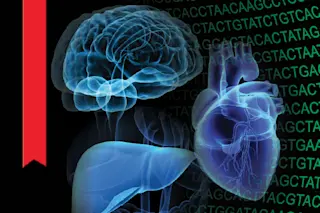In the 12 years since the Human Genome Project was completed, biologists have linked more than a thousand regions of the genome to disease. “But in most cases, we don’t actually know how they function,” says Manolis Kellis, a computational biologist at Massachusetts Institute of Technology.
Enter the epigenome. If the human genome is the book of life, the epigenome is the collection of bookmarks and highlighting that tells the cell what passages of the book to read. These marks include chemical tags on DNA that make genes unreadable, as well as chemical tags on proteins that help expose DNA inside the cell nuclei, making genes readable. They’re the reason that cells from the liver, heart or brain differ profoundly. The National Institutes of Health Roadmap Epigenomics Consortium, including Kellis, published the most comprehensive map of the human epigenome in February.
Kellis led the data analysis team, which applied machine-learning ...















